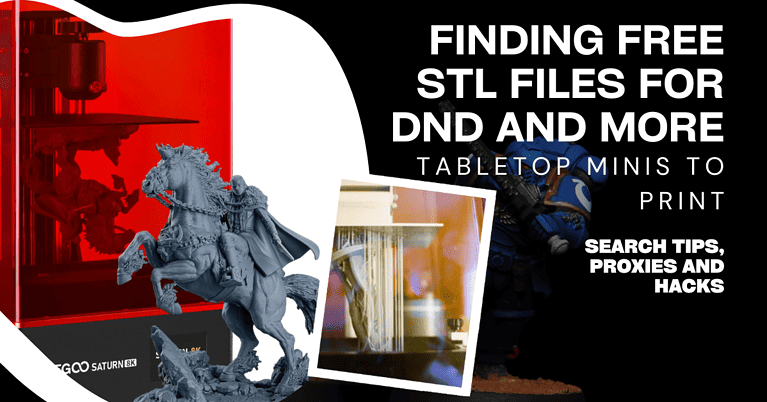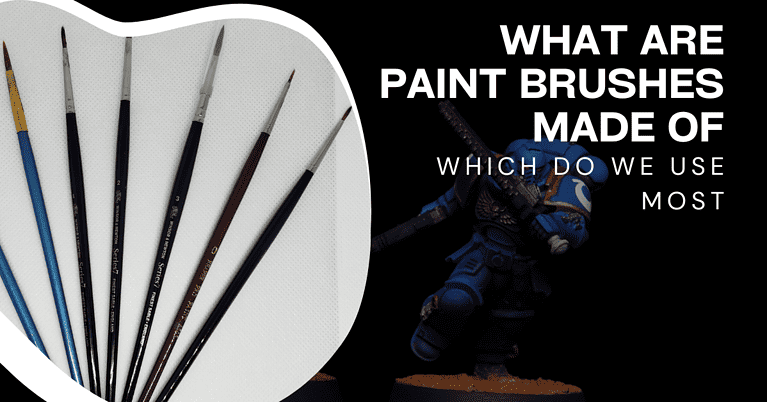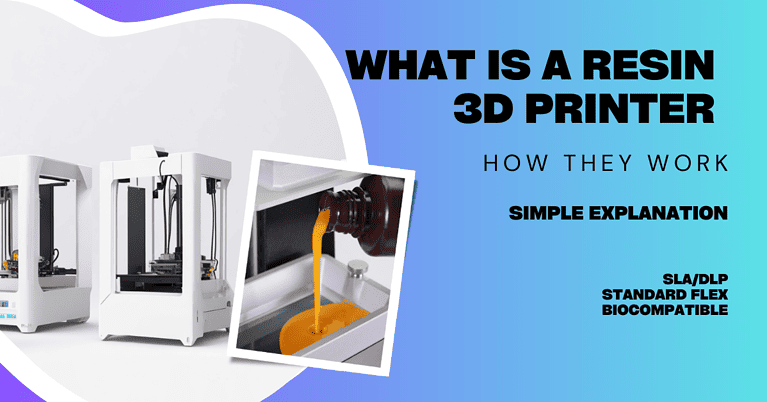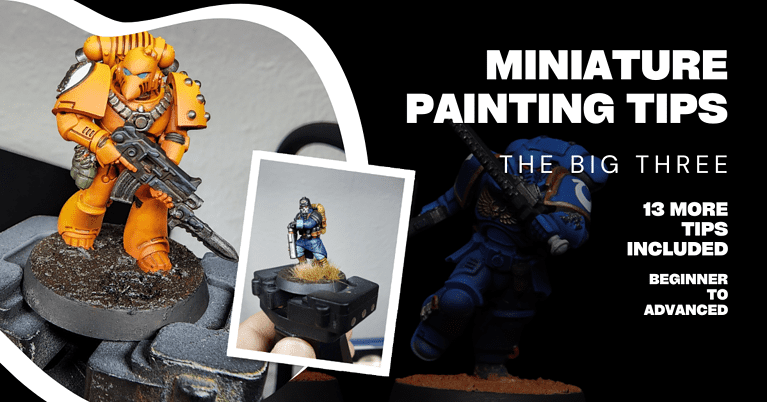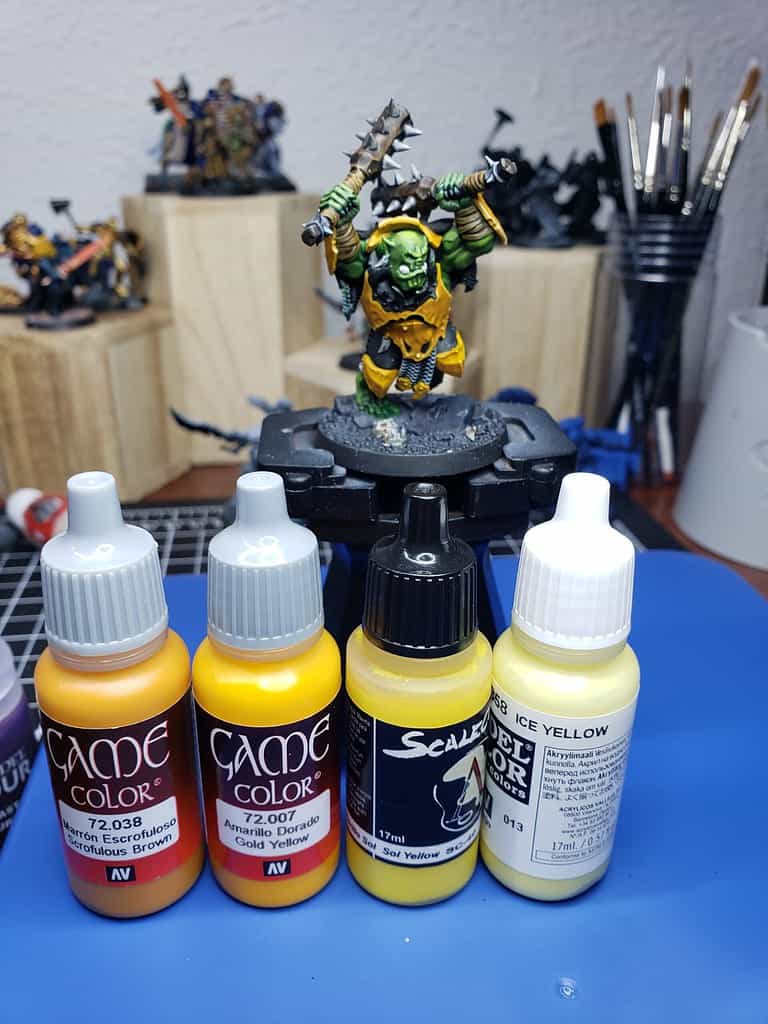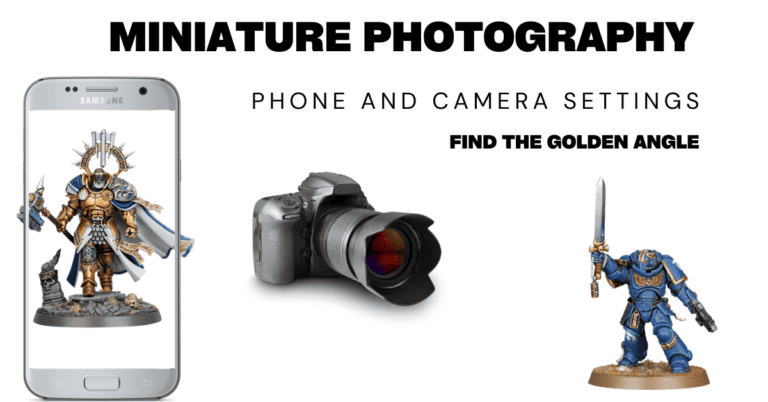What is an FDM 3D Printer and How Does It Work? ( A Simple Guide)
What is an FDM 3D Printer in Simple Terms?
An FDM 3D printer, also known as a filament-based 3D printer, creates objects by melting and depositing a plastic filament layer by layer. It works like a hot glue gun, where the plastic filament is fed into a nozzle, heated until it melts, and then extruded onto a build platform. As the layers cool and solidify, they bond together, gradually forming a complete 3D object. FDM printers are affordable and widely accessible.
FDM printers are commonly used by hobbyists like myself to create miniatures, terrain, cosplay gear, and board game figures. They are also used for a number of other things like prototyping, DIY projects, and small-scale manufacturing.
FDM stands for Fused Deposition Modeling in 3D printing. Which is basically just describing the process. It takes some plastic material that is wrapped up like a spool of thin wire, melts it, puts it on a plate, and creates objects.
Filament is simply the material the printer uses. It’s typically plastic based, and comes in a few popular forms that I’ll cover below. A roll of filament looks like this:

You buy rolls of filament, attach them to the printer, and it uses the material to 3D print whatever objects you want.
The Most Popular Types of FDM Filament
ABS (acrylonitrile butadiene styrene) Filament
ABS plastic filament is simply an acronym for it’s components: acrylonitrile, butadiene, and styrene. Technically, it’s a thermoplastic which means it can be melted and solidified repeatedly without losing it’s properties or structure.
ABS filament is a very common 3D printing material known for its strength and durability. ABS is fairly easy to clean up with sanding to get a smooth finish. It has a higher printing temperature compared to other filaments, requiring a heated print bed to minimize warping.
ABS filament is widely available and offers a good balance between affordability and performance.
PLA (polylactic acid) and PLA+ Filament
PLA (Polylactic Acid) is one of the most popular materials used for FDM 3D printing. It is made from cornstarch or sugarcane, making it renewable and environmentally friendly.
PLA filament is known for its ease of use and beginner-friendly characteristics. It has a relatively low printing temperature, which means it doesn’t require a heated print bed like some other filaments.
When it comes to 3D printing miniatures, PLA is what I will usually go with. I mostly use my FDM printer for terrain for example and I’ll use PLA to print with.
PLA is also known for its vibrant colors and smooth printing results. It is ideal for creating objects with intricate details, and it has a pleasant, slightly sweet odor compared to other filaments.
PLA is strong, but brittle. This can be a problem depending on what you’re printing. Complex items, or something with thin parts to it, might easily break. This has given rise to PLA+ filament.
PLA+ Filament is augmented PLA. There is no one way to make PLA+, it is enhanced by the manufacturers in different ways. Some more common improvements are to the overall strength.
You might see it advertised as “stronger” or having better “fracture toughness”. Ultimately they are improving normal PLA by making it less brittle and more resistant to breaking or chipping.
PETG (polyethylene terephthalate glycol) Filament
PETG (Polyethylene Terephthalate Glycol) filament is another common choice for FDM printing. It is known for its combination of strength, durability, and ease of use. PETG filament has excellent impact resistance and flexibility, making it very good for functional parts and objects that require some degree of flexibility. It also offers good chemical resistance and is less prone to warping compared to other filaments. PETG is transparent and can be easily dyed or colored.
PTEG is typically for more durable prints. It is used for things like mechanical parts, containers, and prototypes.
TPU (thermoplastic polyurethane) Filament
TPU (Thermoplastic Polyurethane) filament is more like a rubber material. It’s very stretchy and light, almost like a rubber band. TPU is great for anything that needs to be stretchy and pliable. It is often used for creating wearable items, phone cases, seals, and functional parts that require both strength and flexibility.
TPU is available in various hardness levels, allowing for different levels of softness or stiffness in printed objects. Its flexibility and versatility make TPU filament a popular choice for applications that demand both durability and flexibility in 3D printing.

The FDM 3 Printing Process in Simple Terms
FDM (Fused Deposition Modeling) printing is a process where objects are created by melting and depositing layers of plastic material. It starts with a digital 3D model created by someone with modeling software and typically saved as STL file format.
The 3D model STL is loaded in software called slicers. Slicers cut up the model into thin sections and relay the information to the printer.
During printing, a plastic filament is fed into the printer. The filament is heated until it melts and is then extruded through a nozzle. The printer moves the nozzle along a path that it gets from the slicer and STL file.
It deposits the melted plastic material layer by layer. As each layer cools down, it solidifies and bonds with the previous layers, gradually building the object from the bottom up.
The 3D printing process is similar for all types of 3D printing technologies. It’s sometimes called additive manufacturing, which is just another way to say building layer upon layer.
The real differences are how they add the layers, and what materials are used. FDM technology uses melt and extrude. SLA uses resin that is cured (hardened) by UV light, and other techs are coming around all the time to improve the fabrication process.
Components of an FDM 3D Printer
The Extruder
The term extrusion just means squeezing liquid material out of an opening. I like to compare it to squeezing a tube of toothpaste. You could say you’re extruding the toothpaste from the tube to place on your toothbrush.
In the case of an FDM printer, it’s just melting plastic string (filament) and extruding it onto a platform (print bed) in a very specific size and shape.
The extruder in an FDM printer feeds and melts the filament. The filament drive system pushes the filament forward, a heating element called the hotend melts the filament, and a small nozzle that controls the extrusion diameter.
The extruder ensures a consistent and controlled flow of liquified filament, which is then deposited layer by layer to create the 3D printed object.
The Nozzle
The nozzle is a tiny pipe that guides the flow of melted filament onto the print bed. The solid filament is typically on a spool and enters the nozzle from a feeding system. Inside the nozzle, a small heater melts the filament into a thick liquid.
Once the filament is melted, the nozzle determines the size and shape of the extruded material. The nozzle moves along the X, Y, and Z axes, following the instructions from the sliced 3D model.
By precisely controlling the movement and extrusion of the liquified filament, the nozzle deposits the material onto the print bed, layer by layer, gradually building the final 3D object. The size of the nozzle plays a role in determining the level of detail and precision that can be achieved in the printed object, as well as the printing speed.
Common issues in FDM printing is the nozzle clogging. Smaller nozzles, problems with heating, materials used, settings, and more can contribute to this issue.
The Print Bed
This is simply the flat, usually rectangular metal surface that the print gets created onto. Sometimes called a build plate or similar, it’s the base of the printer.
The print bed is often heated. The heated bed helps ensure proper adhesion of the first layer, preventing warping and improving print quality. Some print beds have surface treatments to enhance grip. After printing, the object cools on the bed and can be easily removed.
Cooling Fan
A cooling fan does what it sounds like. Cools the liquified and heated material. Much of FDM comes down to melting and cooling plastics. The fan is typically positioned near the nozzle or hotend area.
It blows a stream of air onto the freshly extruded filament to cool it down. This solidifies the filament quickly, reducing the chances of warping and ensuring better grip on the print bed or layer it’s going on top of.
The cooling fan is especially beneficial when printing objects with overhangs or intricate details, as it helps maintain the shape and improves the overall print quality. By controlling the cooling process, the fan allows for more precise and accurate prints, enhancing the final result of the 3D printed object.
Quality and Accuracy of FDM Printing
Very broadly speaking, my experience with FDM compared to SLA 3d printing, is FDM has less quality out of the box. While you can get very high quality prints, it requires high end materials and some experimentation. I would also say it’s come a long way from it’s beginnings. I am also coming at this as someone who primarily prints for tabletop gaming.
D&D miniatures, terrain, Warhammer stuff, fun things to print and paint, all of that. That’s what I use printers for.
I tend to use FDM printers for things like miniature terrain or buildings. Bigger prints, stuff where it doesn’t matter much if it’s a little imperfect.
Advantages of FDM
Build Volume: FDM will typically give you room for bigger prints. The build plate and printer arm makes it easier to accommodate more surface area. I own an Ender 3 FDM printer and the build volume is roughly 9x9x1o. It can be expanded from there with modifications.
That’s a big surface to print with. Compared to SLA printers you’d have to spend 3x the money for that volume.
Variety of Print Materials: FDM printers can use a lot of different materials for a variety of finishes. You can get a hard tough product or something with more flexibility to it, and even a rubbery texture.
Compared to SLA where you can only use resin for the most part.
Easier Clean Up and Post Process: SLA requires liquid resin, which can have fumes and requires more clean up. FDM is a very simple and clean process, with the solid material wound up on a spool.
Ultimately there are a lot of reasons to love an FDM printer. While many hobbyists prefer resin for miniatures, the FDM printer has a huge advantage in build size and material diversity.

